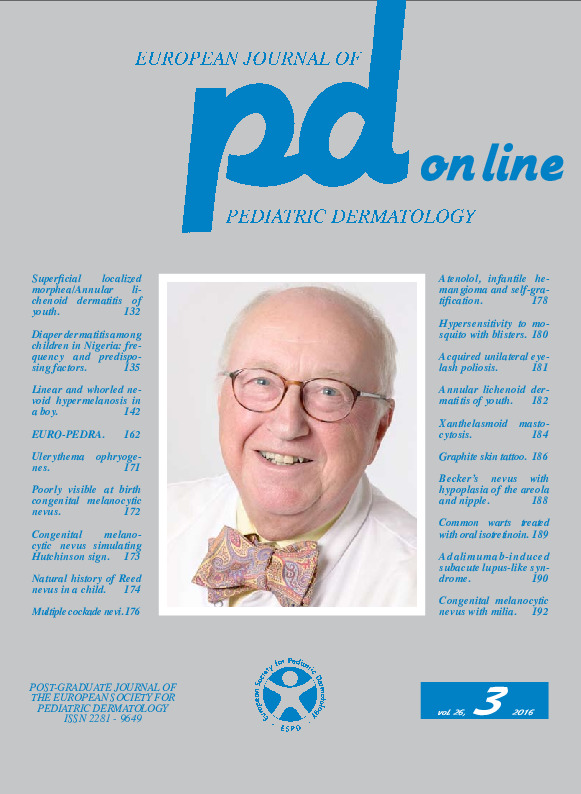Graphite skin tattoo.
Downloads
DOI:
https://doi.org/10.26326/2281-9649.26.3.1265How to Cite
Bonifazi E. 2016. Graphite skin tattoo. Eur. J. Pediat. Dermatol. 26 (3):186-7. 10.26326/2281-9649.26.3.1265.
pp. 186-7
Abstract
Cases of cutaneous tattoo due to graphite are not described in the literature, probably due to its banality more than to its rarity; however, some cases (1, 2) of graphite tattoo of the oral cavity were reported. In the mouth the differential diagnosis from amalgam tattoo and melanocytic lesions was discussed, leading sometimes to the histological examination (1) and to an autologous connective graft to obtain an esthetically acceptable outcome (2). The graphite tattoo of the oral cavity occurs earlier than the amalgam; the histology finding shows a foreign body granuloma. In the cases here reported the differential diagnosis from a dermal melanocytic proliferation was easy for the small size of the lesions, which were non palpable, their dot-like or linear aspect and absence of initial growth.Although we did not perform a histological examination, based on the analogy with the oral lesions, it is likely that the histological findings of the skin lesion induced by graphite are consistent with a foreign body granuloma arisen around fragments of the pencil lead. The latter essentially consists of non-degradable carbon and of a various amount of clay that is directly related to the hardness of the mine, and then to the possibility of obtaining a more precise tract. As the perfectly done tattoo, the pencil-induced tattoo is characterized by non-biodegradability and therefore by its long persistence in time.
Keywords
Tattoo, Pencil, Graphite

